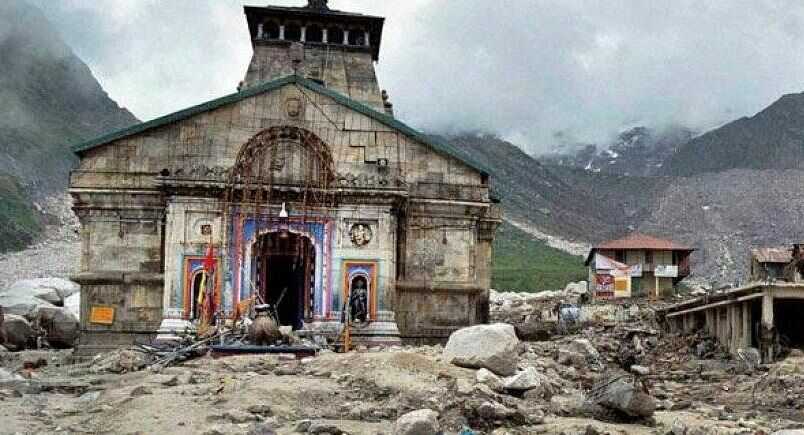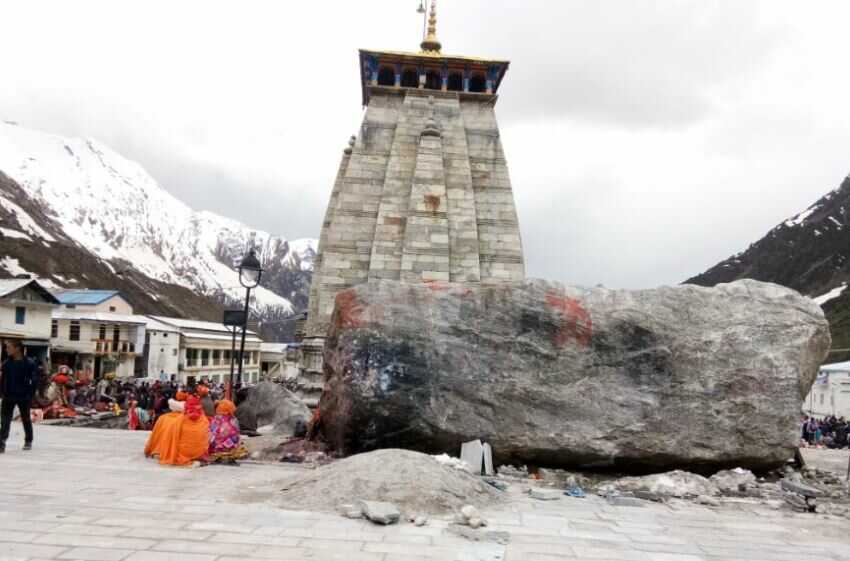The Kedarnath flood happened in 2013 and it was one of the worst natural disasters to have occurred in India in recent times. Here we have shared the complete story and the reason behind the Kedarnath flood.
Kedarnath Flood

The Kedarnath flood of 2013 was a natural disaster that struck the Indian state of Uttarakhand in June 2013. It was caused by heavy rainfall, which resulted in flash floods and landslides in the region.
The flood affected many towns and villages in the area, including the holy town of Kedarnath, which is known for its ancient temple dedicated to Lord Shiva.
The Kedarnath temple is situated at an altitude of 3,583 meters (11,755 feet) above sea level, in the midst of the Garhwal Himalayas. The temple is surrounded by the Mandakini River, which flows down from the Kedarnath peak. The heavy rainfall caused the river to swell, leading to a devastating flood that swept away everything in its path.
Kedarnath Disaster Reason
The Kedarnath disaster is the devastating floods and landslides that occurred in the Kedarnath region of the Indian state of Uttarakhand in June 2013.
- The disaster, also known as the Kedarnath tragedy, was caused by heavy rainfall and flash floods that hit the region, resulting in the loss of thousands of lives and extensive damage to infrastructure.
- On the night of June 16, 2013, the flood-hit Kedarnath with full force. The town was flooded within hours, and many buildings, including houses, shops, and hotels, were washed away.
- The Kedarnath temple, which is located on the banks of the Mandakini River, was also severely affected. The force of the floodwaters was so strong that it shifted the course of the river, causing it to flow closer to the temple.
Thousands of pilgrims were stranded in Kedarnath and the surrounding areas, as roads and bridges were washed away by the flood.
Bhim Shila (Huge Stone) in Kedarnath

According to popular belief, Bhim Shila played a crucial role in saving the Kedarnath temple from the devastating floods that hit the region in 2013. It is said that when the floodwaters began to rise, the boulder acted as a barrier, diverting the flow of the Mandakini River away from the temple and the town of Kedarnath.
The Mandakini River flows close to the Kedarnath temple, and the floods caused by the heavy rainfall in 2013 severely damaged the surrounding areas, including the town and the temple. However, Bhim Shila, which is located upstream of the temple, is said to have acted as a natural dam, blocking the flow of the river and preventing the floodwaters from reaching the temple.
According to eyewitness accounts, the floodwaters rose to a dangerous level, with debris and boulders being swept along with the current. However, as the water approached Bhim Shila, it was said to have split into two streams, flowing around the rock and rejoining downstream of the temple.
Many people believe that Bhim Shila played a significant role in protecting the Kedarnath temple and the surrounding areas during the floods of 2013. The rock’s position upstream of the temple is said to have prevented the temple from being washed away, and its size and shape are believed to have played a role in diverting the flow of the river away from the town.
While the exact extent of Bhim Shila’s role in protecting Kedarnath during the floods is unknown, it remains an important part of the region’s cultural and religious heritage and is revered by pilgrims and visitors alike.
Kedarnath Flood Deaths and Rescue Operation
Rescue operations were launched immediately, and the Indian Army, the Indian Air Force, and other agencies worked together to rescue people and provide relief.
The flood caused widespread damage to the region, with many villages and towns being completely destroyed. The death toll from the disaster was estimated to be over 5,000, with thousands of people still missing.
The Kedarnath flood of 2013 was one of the worst natural disasters to have occurred in India in recent times. The disaster highlighted the need for better disaster management and infrastructure in the region.
Since then, the government has taken several measures to improve infrastructure, including building better roads and bridges and improving communication systems, to ensure that the region is better prepared to deal with future disasters.


